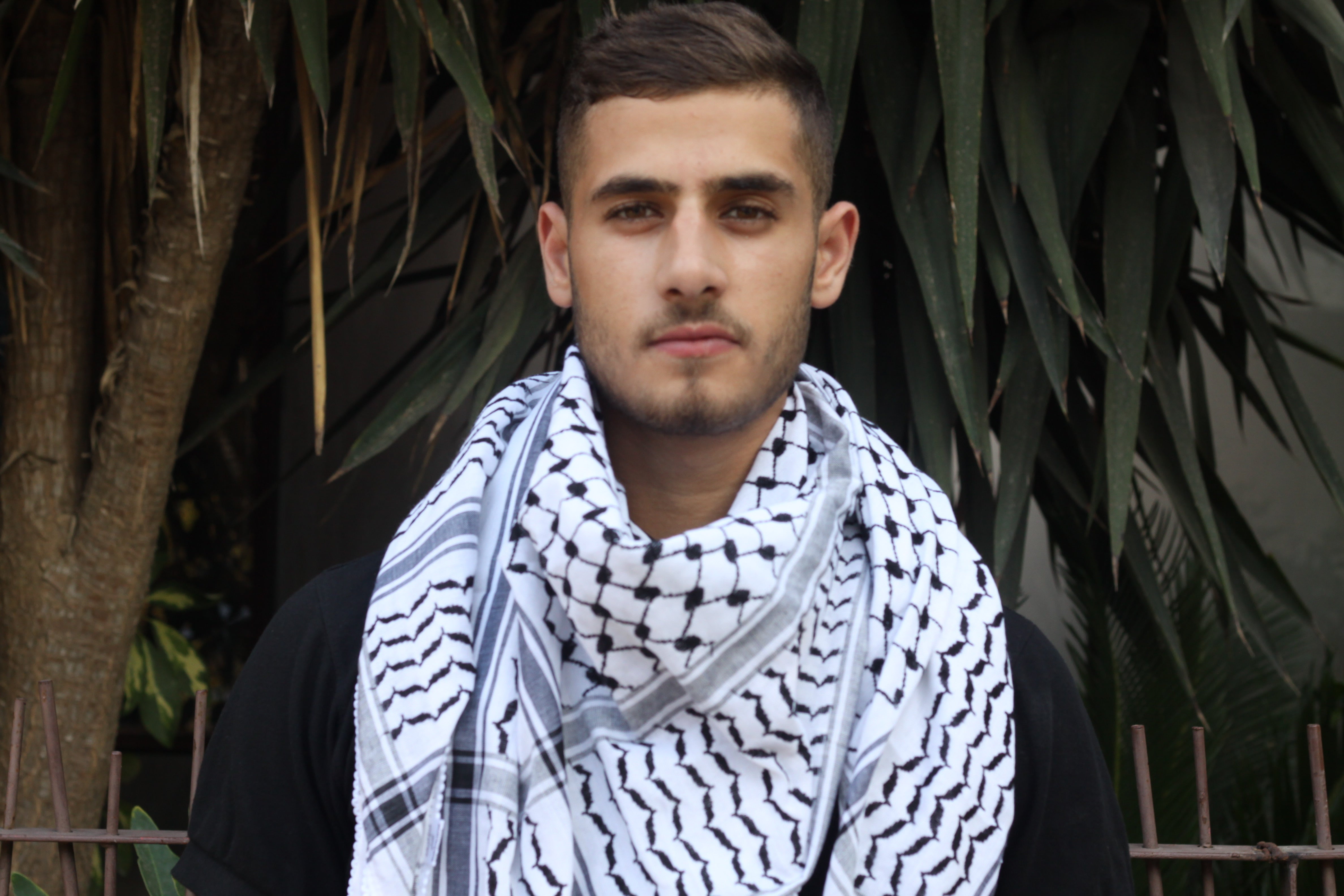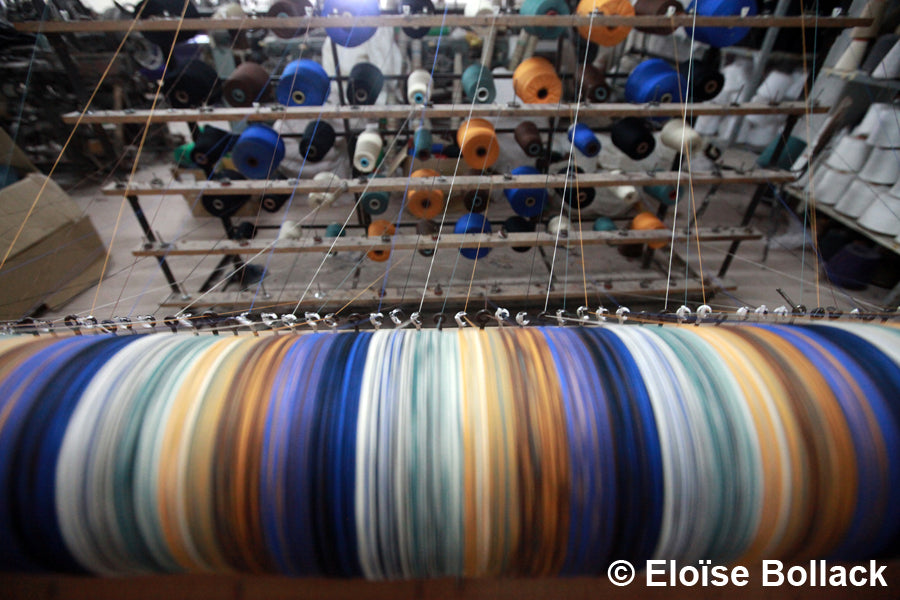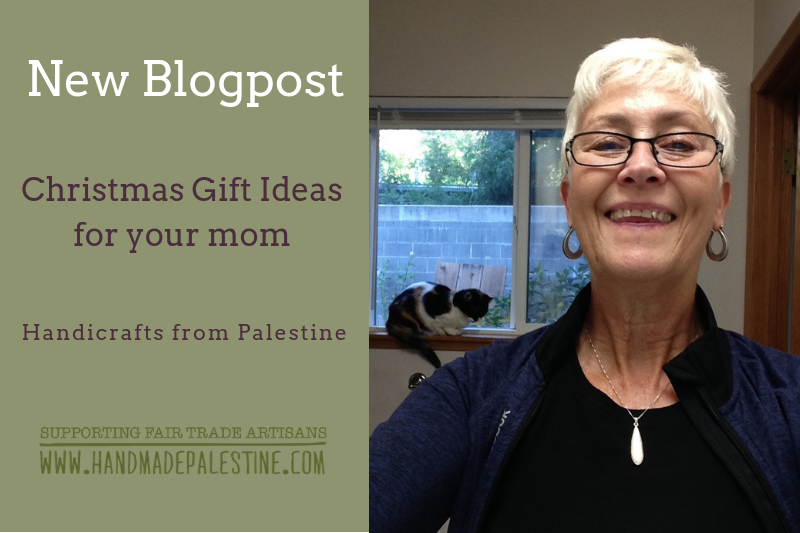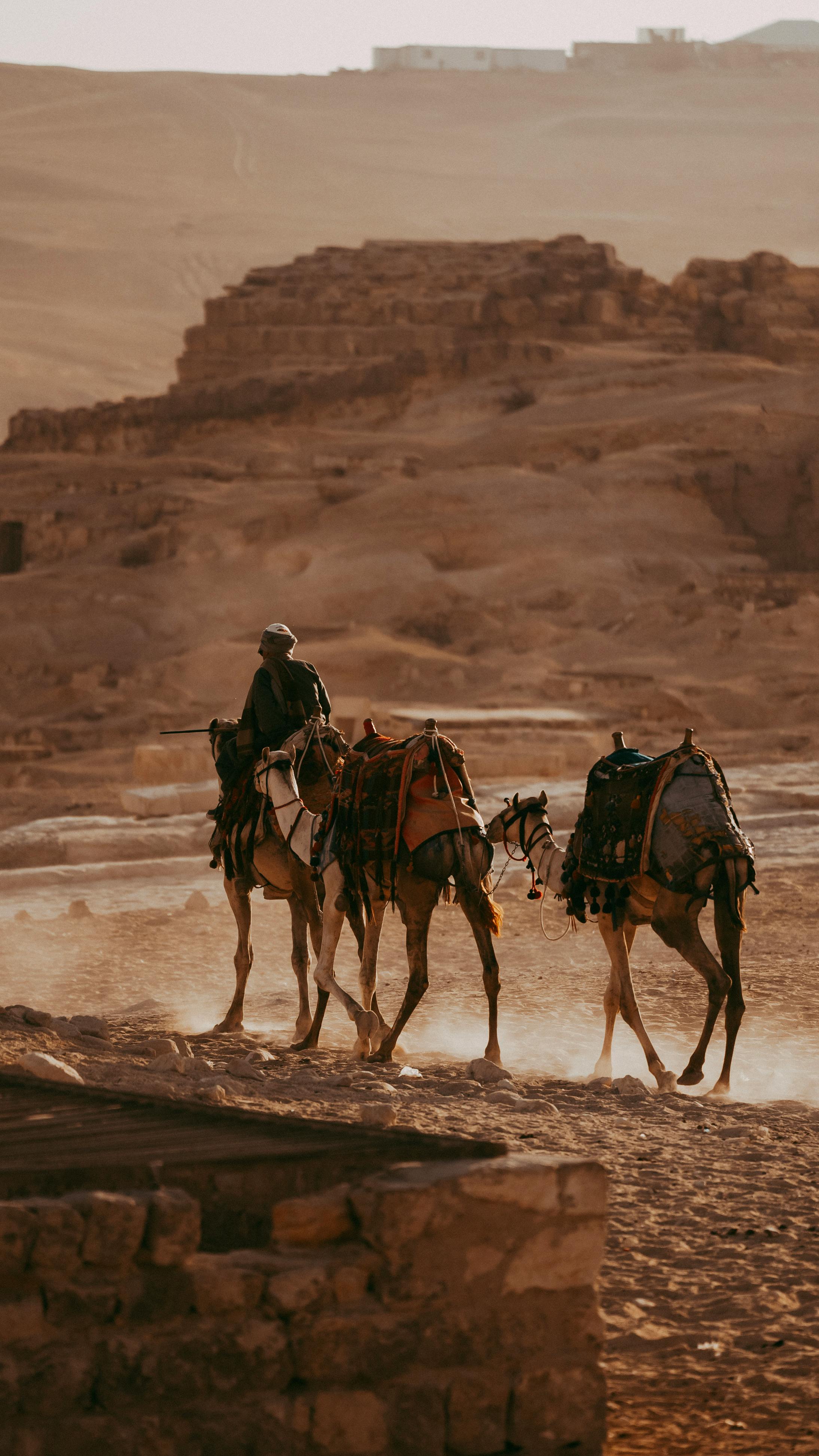
The History of Keffiyeh: A Traditional Scarf from Palestine
This scarf we call the palestinian keffiyeh today has a fascinating history dating back to Sumerians and Babylonians in Mesopotamia. It is also known as a shemagh scarf, arab scarf, Palestinian hatta, yamegh, and igal. Prophet Mohammd (pbuh) used to wear the Shemagh as well. Donning the Shemagh has held many different meanings and uses over time and depending on location / culture. The symbolic meaning, color and keffiyeh style vary from one country to another and even from one region to another. For instance, here in Palestine, it’s very common to see a Palestinian keffiyeh worn in solidarity protests and demonstrations.
Where did the Keffiyeh originate?
Today it is well known that the keffiyeh is a symbol of resistance and solidarity in the Arab countries and in Palestine in particular. But the root history is said to go back to the Sumerians in Mesopotamia (the civilization of Sumerians and Babylonians in West Asia in 3100 BC). The yamegh, or shemagh, was worn by priests, as a symbol of high rank, or honor. These priests were the rulers, managing and controlling the lands where they lived.
Moving forward in history, the keffiya as a head covering was adopted by peasants who wore it while they were working on the land to protect them from the sun, and sand, as well to wipe their faces from the sweat, and in winter to protect them from the rain and cold.
Get yourself a Keffiyeh. We have 65+ Styles including the Traditional Arafat Hatta or Palestinian Scarf and the Jordanian Red Hatta. Go to collection.
The Keffiyeh's popularity in Palestine
 During the British Mandate, especially during the 1936 Arab Revolt, Palestinian rebels used the keffiyeh to hide their identity to avoid arrest. When British Mandate authorities banned the keffiyeh, all Palestinians started wearing it to make it harder to identify the rebels. These events turned the keffiyeh into a symbol of resistance in Palestine, which continues through this day. This symbol strengthened greatly during the First Intifada in 1987, and again in the Second Iintifada in 2000.
During the British Mandate, especially during the 1936 Arab Revolt, Palestinian rebels used the keffiyeh to hide their identity to avoid arrest. When British Mandate authorities banned the keffiyeh, all Palestinians started wearing it to make it harder to identify the rebels. These events turned the keffiyeh into a symbol of resistance in Palestine, which continues through this day. This symbol strengthened greatly during the First Intifada in 1987, and again in the Second Iintifada in 2000.
The late Palestinian President Yassir Arafat also had an influential role in rendering the keffiyeh an everlasting symbol for the Palestinian fight against occupation during the First and Second Intifadas: he would rarely appear in public without putting his hatta and igal on. Many Arab celebrities today express their solidarity by wearing the keffiyeh on T.V.
The only Keffiyeh factory in Palestine
More than 5 decades ago there were more than 30 Keffiyeh factories operating in Palestine. Today there is only one factory in Hebron.
The General Manager of the factory said they have produced more than 250 styles of keffiyeh, more than 150,000 keffiyehs each year. The factory was established in 1961, and used to operate more than 15 machines; today, after the import of cheaper keffiyehs produced in China started competing in the local markets, only 4 machines operate in the factory employing 15-25 workers.

The Keffiyeh in the fashion world?
The keffiyeh in fashion today is a controversial topic among many people here in Palestine, mainly because of the varied colors used instead of the original black-white and red-white color. Many in the West buy and wear the keffiyeh, transforming it into a fashion trend. The trend was booming two years ago in Europe, with few wearing it without knowing the origins and resemblance, hence making that an act of cultural appropriation.
According the factory manager the Arafat Kuffiya which is the black and white keffiyeh remains the most famous keffiyeh and the most sold keffiyeh in the world today.
In my opinion, I see no harm in the keffiyeh becoming a fashionable accessory. We see that many artists around the world have put on a keffiyeh in music videos and movies, but it's important that you understand the meaning, and inform your friends and family about the symbolism.
When we asked Judeh about this controversy, he replied that we hold strongly to the original colors and patterns of the keffiyeh, while the modern colored styles mostly came from Europe.
In terms of new colors and styles of the keffiyeh, it’s natural for things to develop and have new colors to make it more attractive for others to buy. If the factory refused to manufacture other styles and colors, they wouldn’t sell enough to sustain the business and the factory would shut down its operations.
More than 10 families would lose their source of income and Palestine would lose the last factory in the country. I think of Palestinian embroidery, which is constantly developing and adopting new patterns, because it’s natural for art and fashion to develop and take new shapes and forms.
In the last section of Labor of Love, an exhibition by Rachel Dedman in the Palestinian Museum in Birzeit, an embroidered dress is on display--the dress’s pattern and colors were inspired by a design from Pinterest. Seeing the dress some people might not call it a Palestinian embroidered dress. The question is do we see this dress as other than Palestinian because it doesn’t feature traditional patterns, thus we wouldn’t recognize it as part of Palestinian culture?
If we introduce new designs, colors and patterns to our handicrafts, do we render them as foreign? Are they no longer Palestinian when we move away from the traditional? Is there no room for Palestinian artists and designers to develop and evolve their artistry?
What is the keffiyeh made from?
The keffiyeh is a traditional Middle Eastern headdress fashioned from a square meter scarf, usually made of cotton. Some other factories make it with a fabric that is a mix of polyester and cotton or solely polyester. The best quality ones are made from 100% cotton, like the ones made at the factory in Hebron. After the fabric goes through the machines and comes out with the embroidery, it is cut into square meter pieces and tassels and the tags are sewn on.

Popular uses of Keffiyeh:
- Table cover
- Hey photographers, you could use it a backdrop for your settings. My sister uses the keffiyeh in her baby photography sessions wrapping babies with them. Let them babies represent!
- Curtain
- Tannoura--Skirt.
- Chair cover
- Nursing Cover
- Hijab
How to wear a Shemagh?
Here are some of the many ways to wear a keffiyeh:
This method is most commonly used on cold days to protect the neck.
While this method is used as a light scarf on chilly spring and summer nights.

Watch Video: How to wear a keffiyeh
Folks from the Arab American National Museum show us 4 different alternative ways to wearing a keffiyeh scarf
From where can I buy a Palestinian keffiyeh?
Get your keffiyeh from Handmade Palestine now! We have more than 20 style of keffiyehs waiting for you.







13 comments
Thanks for the article. I learned more from it than I thought I might. I recently purchased an American flavored Gadsden motif version here in the states and will proudly wear it in solidarity with the Palestinians. True Americans want no more conflict, no more corruption and true freedom for all who wish for it.
Nate
I shall wear my recently purchased Hebron keffiyeh as a symbol of solidarity. And yes to the question of whether Palestinian artist can use traditional motifs as inspiration for new authentic designs and uses, especially if it helps the economic security and independence of the Palestinian people. There should indeed be room for development of new artistry.
Grace Garrard
Since I read about The Nakba I have wholeheartedly supported The Palestinian’s
in their fight against genocide. This is not about apartheid it is merely a systematic destruction of a wonderful and warm people whose land was wrested from them.
When it comes to USrAel there is a depthless pit of sadism.
Israel is a child’s game and one in which they have all the pieces.
There is no parity and no talking away the atrocity that is this
behemoth of Misery and Destruction.
I will never abandon Palestine.
And just because the US has done what it always does,
Shireen Abu Akleh will not just evaporate from the minds
of the people that truly know what happened.
Europe, it’s Union they are Cowards. Cowards as well; are the settlers, the army, mossad, police. etc.
There is not a day that goes by that I don’t think
of the ongoing torture and trauma and peaceless days and nights
of you and your families.
I don’t believe in gd, but I do believe one simple thing.
The free agency of every being to do what they choose.
That and instead of the innocuous ‘thoughts and prayers’ I prefer
some kind of action.
Do unto others , As you would want them to do for you. This is the single most important guideline and easily done.
NO one in Israel could possibly believe that the slow annihilation of a whole culture
will gain them the entitled position they so covet.
Unless of course just like the US you are being a psychopath with no
heart or rules to govern your sick actions and endless rationale and blame
pointed elsewhere but never at yourself.
Peace and Love to you ALL.
With great sincerity and respect for you as humans
and for your beautifully realized crafts and art that
bring such joy and pride for The ongoing Nakba.
Bill sonic Fricke
Bill
Just bought one. After researching the origins of the scarf I was glad to be able to get a real one. Jay
jay houk
Wish I could be of help to your people. Sending Falasteen love and support from South Korea.
Soyoung Yang
I visited Hebron in 2016/7. I was horrified at the conditions under which the Palestinian people have to exist. I bought a black and white Keffiyeh from you which I always wear on pro Palestinian marches here in England and other times in solidarity. Please believe that there are many people here including rabbis and Jewish people who support your cause.
Jane Nye
Thank you for the history and meaning of the keffiyeh! I have worn one in support of the Palestinian people, and as a means of telling people about Palestine and its people. Thank you for enriching my understanding!
Love and Solidarity!
Deborah Espen
Beautiful website I love the insight, Palestine forever!
Taleb Husein
I cannot believe what is happening to the Palestinian people. My thoughts and prayers are with your people.
Angela Keogh
I really appreciate it learning the history cultural of our friends and modern use of this. Coming from Ireland originally I am glad to know that I have seen this many times in my country however not so much in the states. I wish you every success and thank you for the video. May God bless and protect Palestine. Greetings from Eíre. Ireland 🇮🇪 will always support you.
Deirdre Grace
I really appreciate it learning the history cultural of our friends and modern use of this. Coming from Ireland originally I am glad to know that I have seen this many times in my country however not so much in the states. I wish you every success and thank you for the video. May God bless and protect Palestine. Greetings from Eíre. Ireland 🇮🇪 will always support you.
Deirdre Grace
I’ve just discovered your site, and I love it! I have many shmags and they are all in the Palestinian pattern. Black&White ones, Red&White ones. I often wear it to work in the garden rather than putting on a hat. I use them in winter, on rare days it gets cold enough, to keep myself warm. When people ask me about it, I always take the time to talk about the Palestinian troubles and encourage them to push their legislators to enact laws to help Palestine. I hope you are around for many generations to come!
Jim Leroy Wright
Greetings from Seattle! Love this site. I wish everyone a great 2021. My thoughts are with you!
andy tovar
Leave a comment
This site is protected by hCaptcha and the hCaptcha Privacy Policy and Terms of Service apply.